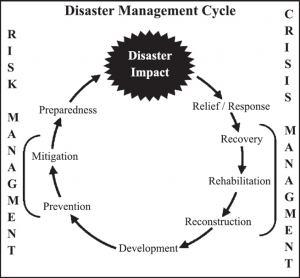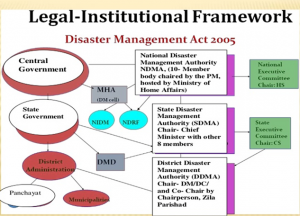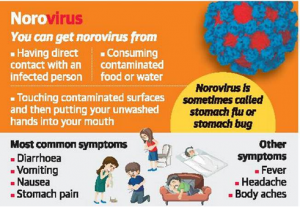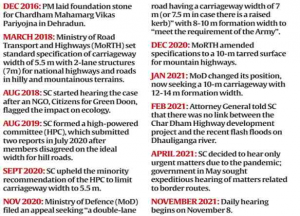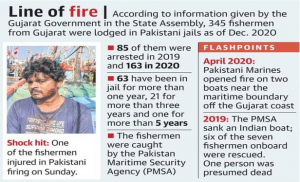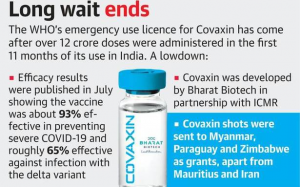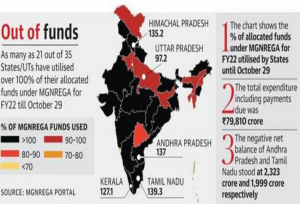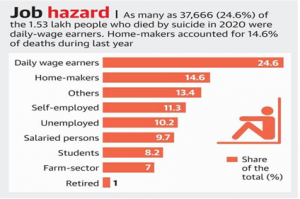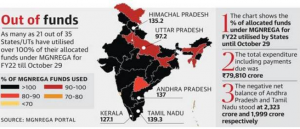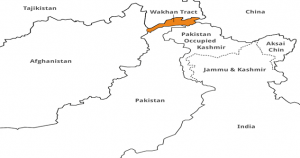DAILY CURRENT AFFAIRS (NOVEMBER 14 & 15, 2021)
ART AND CULTURE
1. KARTARPUR CORRIDOR
THE CONTEXT: BJP leaders from Punjab, met PM and requested him to reopen the Kartarpur corridor before Gurpurab, which falls on November 19. The pilgrimage to the Kartarpur Sahib gurdwara was suspended in March 2020 because of the COVID-19 outbreak.
ABOUT KARTARPUR CORRIDOR
- Guru Nanak is the founder and first Guru of Sikhism.
- He was born in 1469 at Talwandi Rai Bhoe near Lahore. The place is renamed later Nankana Sahib.
- He undertook preaching tours, also called Udasis, to spread his message.
- In the later years of his life, Guru Nanak settled down at the township of Kartarpur, on the banks of river Ravi in Punjab.
- Kartarpur Corridor connects the Dera Baba Nanak Sahib Gurdwara in the India’s state of Punjab to the Gurdwara Darbar Sahib Kartarpur shrine in Narowal district of Pakistan’s Punjab province.
- It runs across over Ravi River.
- The Gurdwara Darbar Sahib was ordered by the Maharaja of Patiala between 1921-1929.
- Guru Nanak died at the age of 70. He appointed Bhai Lena as his successor and renamed him, Guru Angad.
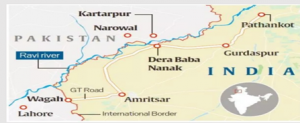
SOURCE: TH
INDIAN POLITY, GOVERNANCE AND SOCIAL JUSTICE
2. CITIZENS’ TELE-LAW MOBILE APP
THE CONTEXT: Union Minister of Law and Justice launched the Citizen’s Tele-Law Mobile App.
THE EXPLANATION:
- Tele-Law: Reaching the Unreached e-interface platform was launched in 2017 by the Department of Justice, to strengthen the pre-litigation mechanism in the country.
- This is operational in 51,434 Common Service Centres across 50,000 Gram Panchayats in 633 districts Tele-Law leverages technology (viz. tele-video conferencing facilities) to connect the beneficiary with the Panel Lawyer to seek legal advice and consultation for early redressal of their grievance.
- Expanding its reach and ambit the Citizens’ Tele-Law Mobile App intends to widen the access to increased legal information and empowers the masses to identify their problem and choose from the appropriate forum of dispute redressal to claim their entitlements and rights by connecting the beneficiary directly to the Panel Lawyer or with the assistance of Para Legal Volunteers, Village Level entrepreneurs, in case of a beneficiary who are unable to read or write.
- The consultation is available free of cost to those entitled to free legal aid under Section 12 of Legal Service Authority, whereas Others could avail at Rs 30/ per consultation.
SOURCE: PIB
ENVIRONMENT, GEOGRAPHY AND AGRICULTURE
3. KEY TAKEAWAYS OF COP26
THE CONTEXT: The Glasgow climate meeting has ended with a pact weaker than many had hoped for. Among its successes, a global pledge to reduce methane emissions, and resolution of the carbon market deadlock.
ABOUT COP26
- The Glasgow meeting was the 26th session of the Conference of Parties to the UN Framework Convention on Climate Change or COP26. These meetings are held every year to construct a global response to climate change. Each of these meetings produces a set of decisions that are given different names. In the current case, this has been called the Glasgow Climate Pact.
- Earlier, these meetings have also delivered two treaty-like international agreements, the Kyoto Protocol in 1997 and the Paris Agreement in 2015. While the Kyoto Protocol expired last year, the Paris Agreement is now the active instrument to fight climate change.
- The main task for COP26 was to finalise the rules and procedures for the implementation of the Paris Agreement. Most of these rules had been finalized by 2018, but a few provisions, like the one relating to the creation of new carbon markets, had remained unresolved.
- However, due to clear evidence of worsening of the climate crisis in the six years since the Paris Agreement was finalized, host country United Kingdom was keen to ensure that Glasgow, instead of becoming merely a “procedural” COP, was a turning point in enhancing climate actions. The effort was to push for an agreement that could put the world on a 1.5 degree Celsius pathway, instead of the 2 degree Celsius trajectory which is the main objective of the Paris Agreement.
WHAT WAS ACHIEVED?
- Mitigation: The Glasgow agreement has emphasised that stronger action in the current decade was most critical to achieving the 1.5-degree target. Accordingly, it has:
-
- Asked countries to strengthen their 2030 climate action plans, or NDCs (nationally-determined contributions), by next year
- Established a work programme to urgently scale-up mitigation ambition and implementation
- Decided to convene an annual meeting of ministers to raise the ambition of 2030 climate actions
- Called for an annual synthesis report on what countries were doing
- Requested the UN Secretary-General to convene a meeting of world leaders in 2023 to the scale-up ambition of climate action
- Asked countries to make efforts to reduce the usage of coal as a source of fuel, and abolish “inefficient” subsidies on fossil fuels
- Has called for a phase-down of coal, and phase-out of fossil fuels. This is the first time that coal has been explicitly mentioned in any COP decision.
- Adaptation: Most of the countries, especially the smaller and poorer ones, and the small island states, consider adaptation to be the most important component of climate action. These countries, due to their lower capacities, are already facing the worst impacts of climate change, and require immediate money, technology and capacity building for their adaptation activities. As such, the Glasgow Climate Pact has:
-
- Asked the developed countries to at least double the money being provided for adaptation by 2025 from the 2019 levels. In 2019, about $15 billion was made available for adaptation that was less than 20 per cent of the total climate finance flows. Developing countries have been demanding that at least half of all climate finance should be directed towards adaptation efforts.
- Created a two-year work programme to define a global goal on adaptation. Unlike mitigation efforts that bring global benefits, the benefits from adaptation are local or regional. There are no uniform global criteria against which adaptation targets can be set and measured.
Finance: In 2009, developed countries had promised to mobilise at least $100 billion every year from 2020. This promise was reaffirmed during the Paris Agreement, which also asked the developed countries to scale up this amount from 2025. The 2020 deadline has long passed but the $100 billion promise has not been fulfilled. The developed nations have now said that they will arrange this amount by 2023.
ABOUT THE GLASGOW AGREEMENT
The deal aimed at staving off dangerous climate change has been struck at the COP26 summit in Glasgow. The pact has:
- Expressed “deep regrets” over the failure of the developed countries to deliver on their $100 billion promise. It has asked them to arrange this money urgently and every year till 2025.
- Initiated discussions on setting the new target for climate finance, beyond $100 billion for the post-2025 period.
- Ask the developed countries to provide transparent information about the money they plan to provide.
-
- Loss and Damage: Thanks to a push from many nations, substantive discussions on loss and damage could take place in Glasgow. The final agreement, which has acknowledged the problem and dealt with the subject at substantial length, has only established a “dialogue” to discuss arrangements for the funding of such activities. This is being seen as a major let-down.
- Carbon Markets: The Glasgow Pact has offered some reprieve to the developing nations. It has allowed these carbon credits to be used in meeting countries’ first NDC targets. These cannot be used for meeting targets in subsequent NDCs. That means, if a developed country wants to buy these credits to meet its own emission reduction targets, it can do so till 2025. Most countries have presented climate targets for 2025 in their first NDCs. The resolution of the deadlock over carbon markets represents one of the major successes of COP26.
PARALLEL PROCESSES
A lot of substantial action in Glasgow happened in parallel processes that were not a part of the official COP discussions. These do not form part of the final agreed outcome, but Glasgow can certainly claim credit for facilitating these actions.
- India announced a Panchamitra (a mixture of five elements) of climate actions. It raised the targets for two of its existing climate targets, announced two new ones, and also promised to turn net-zero by the year 2070. India’s new commitments created the maximum buzz on the first two days of the Glasgow meeting.
- Several other countries also announced enhanced climate actions. Brazil, for example, said it would advance its net-zero target year from 2060 to 2050. China promised to come out with a detailed roadmap for its commitment to let emissions peak in 2030, and also for its 2060 net-zero target. Israel announced a net-zero target for 2050.
- Over 100 countries pledged to reduce methane emissions by at least 30 per cent from present levels by 2030. Methane is a dangerous greenhouse gas, with a global warming potential nearly 80 times that of carbon dioxide over a 20-year time period. This pledge, if achieved, is estimated to avoid about 0.2 degrees Celsius temperature rise by the middle of the century. The methane pledge is being seen as one of the biggest successes at COP26.
- Another set of over 100 countries promised to arrest and reverse deforestation by 2030.
- Over 30 countries signed on to a declaration promising to work towards a transition to 100 per cent zero-emission cars by the year 2040, at least in the leading car markets of the world.
SOURCE: IE
4. KAISER-I-HIND
THE CONTEXT: Kaiser-i-Hind is Arunachal’s State butterfly.
THE EXPLANATION:
- Kaiser-i-Hind (Teinopalpus imperialism) literally means Emperor of India. This butterfly with a 90-120 mm wingspan is found in six states along the eastern Himalayas at elevations from 6,000-10,000 feet in well-wooded terrain.
- The butterfly also flutters in Nepal, Bhutan, Myanmar, Laos, Vietnam and southern China.
- Although the Kaiser-i-Hind is protected under Schedule II of Wildlife (Protection) Act, 1972, it is hunted for supply to butterfly collectors.
- The decision was taken by the State Cabinet meeting that was for the first time held outside State capital Itanagar at an unusual location — Pakke Tiger Reserve.
- The Cabinet also adopted the Pakke Tiger Reserve 2047 declaration on climate change-resilient and responsive Arunachal Pradesh aimed at lowering emissions and sustainable development.
PROTECTED AREAS OF ARUNACHAL PRADESH
- Two National Parks: Mauling NP and Namdapha NP
- Three tiger reserves: Namdapha (Easternmost tiger reserve of India), Kamlang and Pakke (Pakhui) Tiger reserves.
- One biosphere reserve: DehangDibang Biosphere reserve
SOURCE: TH
5. TIGER TOURISM IN NALLAMALA HILLS
THE CONTEXT: The lush green hills of Nallamala are now open for tourists to explore and learn from, thanks to the ecotourism package announced by the Telangana Forest Department.
THE EXPLANATION:
- Safari ride into the Amrabad Tiger Reserve will be part of the ‘Tiger Stay Package’ which is set to begin from November 17.
- Youth from the local Chenchu tribe will accompany the tourists on the ride and explain the culture of the particularly vulnerable tribal group (PVTG), besides providing assistance in spotting the wild animals.
- Amrabad tiger reserve in Telangana and Nagarjunsagar Srisailam tiger reserve in Andhra Pradesh are continuous protected areas located in two states.
SOURCE: TH
INTERNAL SECURITY
7. MANIPUR AMBUSH
THE CONTEXT: The People’s Liberation Army and the Manipur Naga People’s Front have jointly claimed responsibility for the ambush of an Assam Rifles convoy on Saturday (November 13) morning in Churachandpur district of Manipur, killing seven, including a Commanding officer, his wife and their five-year-old son. The ambush is one of the biggest in the state since the attack on the Dogra Rifles in 2015.
THE EXPLANATION:
- Bahiang, where the attack has taken place, borders Myanmar but falls under the territorial jurisdiction of the Zomi Revolutionary Army, a powerful insurgent group in Churachandpur. The question that local insurgent leaders have been asking is, how the PLA could have operated in this area without ZRA permission and have pointed to ZRA’s security lapse.
- Insurgent leaders have also pointed to the Myanmar coup as a reason for both the revival of insurgent activity as well as the choice of Churachandpur. The district neighbours Chin state in Myanmar where the political situation has been tenuous and there have been reports of human rights violations. An active People’s Defence Force, the armed wing of the National Unity Government, which claims to be Myanmar’s legitimate government, is believed to have pushed Indian insurgent groups towards the Indian border.
- The PLA has been one of the most active groups in the past but has remained dormant over the past 5-6 years. Leaders in other groups have pointed out that even in social programmes organised by insurgent groups – such as anti-drug campaigns, anti-AFSPA and other such protests – have been shunned by the PLA. So, their sudden violent activity has caused surprise.
- Unlike the tribal groups – such as the Naga NSCN-IM and NNPGs, or the 20 odd Kuki/Zomi groups which are in peace talks with the Indian government – the Meitei valley groups have to date not come to the table to discuss a solution with the Indian Government.
- There are six main valley groups in Manipur – the UNLF, PLA, KCP, KYKL, PREPAK, MPLF – apart from numerous splinter groups from each. All the groups operate out of Myanmar and raise funds for operations and arms largely through extortion.
- They use guerrilla tactics in their operations and the attacks on Indian security forces in the northeast are largely carried out by these groups.
- Their activity over the years has dwindled, however, with recruitment having stalled on one hand, and Myanmar’s increasing cooperation with India in recent years, placing pressure on the groups
ABOUT THE PEOPLE’S LIBERATION ARMY (PLA)
- The group was founded on September 25, 1978, under the leadership of N. Bisheshwar, after having broken away from its parent body, the United National Liberation Front. In 1979, the PLA’s political wing Revolutionary People’s Front (RPF) was set up.
- Like the UNLF, and many other splinter groups that would follow, the PLA was fighting for the secession of Manipur from India. While the PLA called for Kuki and Naga insurgents to join their ranks, it remains to this day dominated by the Imphal valley-based Meitei Hindu insurgents.
- Also, like other Meitei underground groups, in its initial years, PLA cadres were trained by the NSCN and held Marxist ideology.
- Its political wing, the RPF campaigned against the use of drugs, and banned alcohol in the state, often using violent means to impose these bans.
- Considered one of the strongest groups in Manipur, the PLA has been working out of Myanmar where they continue to have camps, like the other Meitei groups, and remain active with no ceasefire agreement with the Indian government and have so far not expressed any intention of peace talks with India.
SOURCE: IE
7. RUSSIA STARTS DELIVERY OF S-400 MISSILES
THE CONTEXT: Russia has started delivery of the much-awaited S-400 missile system for deployment on schedule this year.
THE EXPLANATION:
- India had bought the system for over US$ 5 billion in 2018, in a deal that became contentious amid a threat of sanctions from the US on countries engaging in defence deals with Russia.
- There was no official word from the Indian side. The delivery of the weapons system was expected to begin before the end of this year. The delivery of parts has already begun through sea and air routes, sources said.
- India had bought five units of the system in 2018 and had made the first tranche of the payment, $800 million, a year later.
- The S-400 is among the most advanced air-defence systems in the world, with a range of around 400 km. It is capable of protecting its air defence bubble against rockets, missiles, cruise missiles and even aircraft.
- The system is already available with China, which has deployed it along the Line of Actual Control (LAC) in eastern Ladakh amid the 18-month military standoff.
SOURCE : TH
MISCELLANEOUS
8. BIMAL PATEL ELECTED TO INTERNATIONAL LAW COMMISSION
THE CONTEXT: Professor Bimal Patel, vice-chancellor of the Rashtriya Raksha University and member of the National Security Advisory Board of India, has been elected to the International Law Commission for a five-year term, in a hard-fought election at the United Nations.
THE EXPLANATION:
- Patel, 51, garnered 163 votes in the UN General Assembly out of 192 members present and voting, topping the Asia-Pacific group that included candidates from China, South Korea and Japan. He will serve a five-year term starting January 1, 2023.
- In the Asia-Pacific group, there were 11 strong candidates vying for 8 seats, making the election hotly contested.
- He has worked for 15 years at global organisations such as the United Nations of Youth and the Organisation for the Prohibition of Chemical Weapons (OPCW) at the Hague, Netherlands, according to his profile on the Rashtriya Raksha University website.
ABOUT INTERNATIONAL LAW COMMISSION
- The International Law Commission was established by the General Assembly in 1947 to undertake the mandate of the Assembly to “initiate studies and make recommendations for the purpose of encouraging the progressive development of international law and its codification.”
- The Statute of the International Law Commission provides that the Commission shall consist of 34 members who shall be persons of recognised competence in international law.
SOURCE: TheWire
THE PRELIMS PRACTICE QUESTIONS
Q1. Select the odd one out of the following:
a) Namdapha tiger reserve
b) Orang tiger reserve
c) Kamlang tiger reserve
d) Pakke Tiger reserve
ANSWER FOR NOVEMBER 13th, 2021 PRELIMS PRACTICE QUESTIONS
Q1. Answer: B
Explanation:
- H-1B visas- For skilled workers, which are often used by the tech industry
- L visas- For executives, managers and specialized workers being transferred within a company
- H-2B visas- For seasonal workers
- J visas- For cultural exchange, including interns, trainees, teachers, camp counsellors and people participating in a summer work travel program
- H-4 visas – Family members who would accompany workers on H-1B visas
